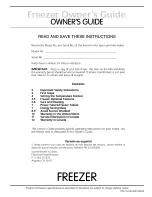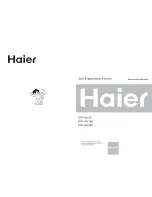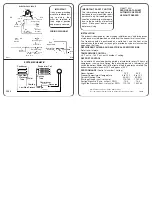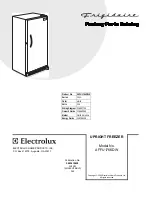
Conformity Information
• Tropical Class is defined for the environment temperatures between 16°C and
43°C in accordance with the TS EN ISO 15502 Standards.
• The appliance is designed in compliance with the EN15502, IEC60335-1 /
IEC60335-2-24, 2004/108/EC standards.
Power failure
If there is a power failure during the storage of frozen foods, keep the door closed. If
the temperature within your freezer should rise do not refreeze the food without
checking it's condition.
Ice Cream: Once thawed should be discarded.
Fruit and Vegetables: If soft should be cooked and used up.
Bread and Cakes: Can be refrozen without danger.
Shellfish: Should be refrigerated and used up quickly.
Cooked Dishes: i.e. casseroles should be refrigerated and used up.
Large Pieces of Meat: Can be re-frozen providing there are ice crystals remaining
within them.
Small Joints: Should be cooked and then re-frozen as cooked dishes.
Chicken: Should be cooked and re-frozen as a fresh dish
Storage Advice
Store fresh food in airtight boxes or wrap in bags or foil which is suitable for freezing.
Do not allow frozen food into direct contact with food to be frozen.
Pre frozen food must be place in the freezer as quickly as possible after purchasing.
To prevent frost damage to fresh vegetables or fruits they must be processed
appropriately before being placed into the freezer compartment.
To Defrost the Freezer
1. Wrap any food in layers of newspaper or blankets.
2. Switch the appliance off at the wall socket and remove the plug.
3. Open the freezer door.
4. Place a suitable container to collect the defrost water.
5. After defrosting, clean and dry the interior.
6. Switch the appliance on and replace any frozen food.
For Customer Services, Spare Parts &
Manufacturer’s Guarantee Information please call
01204 664 084
-11-

































